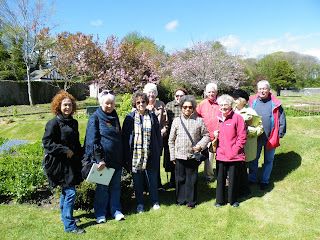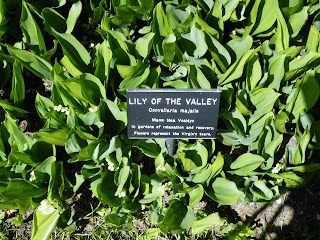Our U3A herb group met at Rushen Abbey gardens, Ballasalla during May. We studied the plants which would be found in an Abbey garden. The plants were well labelled with information on their uses, some of the more unusual herbs planted there are the Gladdon Lily, Masterwort, Motherwort and Vervain. We then had a meeting in the Abbey restaurant where we had tea and cakes while discussing the history of herb gardens. We were fortunate to have access to a book in the i-museum Douglas which was written in 1919 by Eleanour Sinclair Rohde. It is called the History of herbs and has parts of it reproduced from a 1719 manuscript written by a butler. It was fascinating to discover the herbs used throughout the centuries and to learn that the use of vegetables in Britain, once common in Roman times, were not used by the majority of the population until early in the 19th century. Many flowers were used as herbs including roses, lilies, gillyflowers, periwinkle and peonies. Herbs were used in large quantities in Tudor times as stuffings and stewings for the huge quantities of meat that were eaten then.
The use of potatoes as a feed for the general population did not become common until 200 years after they were brought to England in Tudor times. Walter Raleigh's favourite cordial was strawberry wine.
Below is a photo of our U3A herb group and some of the plants in Rushen Abbey herb garden.




